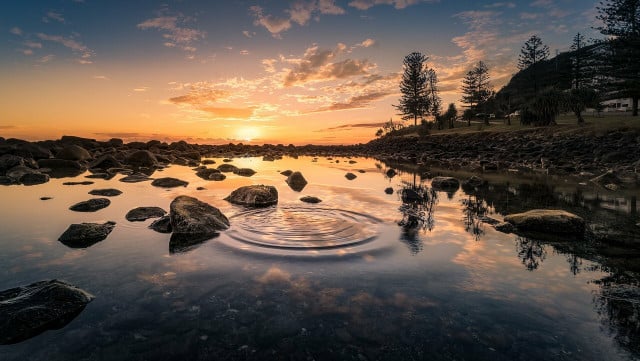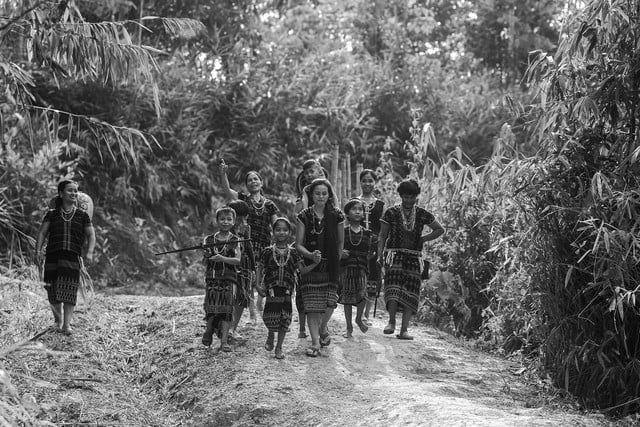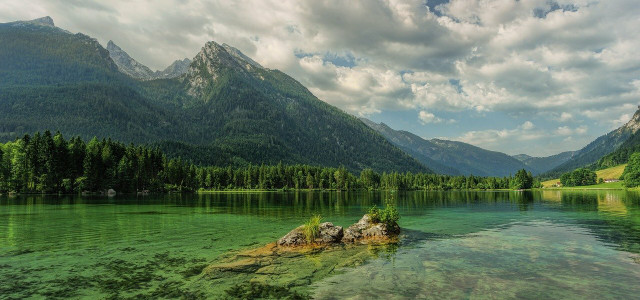Imagine a world determined by natural borders, not political ones. A bioregion groups similar areas together by their natural topographic and biological features.
Contemporary bioregionalism as we know it today arose from the collaboration between various natural scientists, social, and environmental activists, artists and writers, community leaders, and participants in the back-to-the-land movement, those who opted to live a self-sufficient life closer to nature.
The term was coined by Allen Van Newkirk, founder of the Institute of Bioregional Research, in 1975 to form a technical process to identify “culturally and biogeographically interpreted zones… called regions”. His influence over the movement ceased shortly after that, whereby the more prominent originators of the movement, Peter Berg, who considered an ecological conscience in his radical political approach, and Raymond Dasmann, a renowned ecologist and cultural historian from California, co-authored “Reinhabiting California” in 1977.
But the origins of the bioregional philosophy may date back to the regional thinkers of the past 250 years, such as those who sought to alleviate the concerns of the industrial revolution in the early 1900s such as Geddes, Mumford, and Odum, or those utopians, geographers, anarchists, socialists, and ecologists who opposed the “Cartesian” paradigm like Vidal de la Blanche, or Jean Brunches.
In this piece, we will cover bioregionalism: what is a bioregion, which bioregions are there, and why label them?
What Is a Bioregion?

(Foto: CC0 / Pixabay / strikers)
A bioregion is a geographical area grouped together by similar natural topographic and biological features and not defined by arbitrary political or national boundaries. Bioregionalism is the approach used to divide areas into bioregions.
Bioregionalism can also be determined by looking at humanity has interacted with the landscape in conjunction with the natural framework, including land-use patterns, societal systems or concepts, history, or heritage. Bioregions are also known as biocultural regions.
A bioregion is larger than an ecoregion or an ecosystem, but smaller than a biogeographical realm. A bioregion is made up of watersheds (area of land that drains all the streams and rainfall to a common destination) and ecoregions/ecosystems, (an area with characteristic flora, fauna, climatic conditions that can span across various watersheds with similar plants and animals).
On land, the bioregional framework is divided into various biome (ecozone) types — large communities of plants and animals adapted to a specific climate found over a range of continents.
Which Bioregions Are There?
One Earth has come up with a bioregional framework called Bioregions 2020, which builds upon the 844 terrestrial ecoregion divisions determined by Dinerstein et al. in 2017, to categorize 185 bioregions within the world’s biogeographical realms.
They have split the 185 bioregions into 14 biome types, which are:
- Deserts & Xeric Shrublands
- Mountain Grasslands & Shrublands
- Temperate Grasslands, Savannas & Shrublands
- Tropical & Subtropical Grasslands, Savannas & Shrublands
- Flooded Grasslands & Savannas
- Mangroves
- Mediterranean Forests, Woodlands & Scrub
- Temperate Broadleaf & Mixed Forests
- Temperate Conifer Forests
- Tropical & Subtropical Coniferous Forests
- Tropical & Subtropical Dry Broadleaf Forests
- Tropical & Subtropical Moist Broadleaf Forests
- Boreal Forests/Taiga
- Tundra
Note: Mangroves can span across multiple bioregions — but apart from this, an ecosystem is never divided between two bioregions.
Why Label Bioregions?



(Foto: CC0 / Pixabay / Quangbaophoto)
A bioregional philosophy or approach links humanity and human systems to the natural surrounding environment, as we take a holistic look at where we live and how we fit in. It promotes a better understanding of our place within our world, and of our environment. It also encourages us to work in harmony with others who live in the same environmental conditions as we do. It includes and invites the knowledge of local communities and indigenous people who have taken natural flows and territories into account, unlike that of many of the human-made boundaries we see today.
Communities are offered to take matters into their own hands, and rebuild and enhance their lives and livelihoods — free from fear of conflict or violent extractive industries.
Grouping three types of ecoregions together — terrestrial, freshwater, and marine — enables a cohesive system of bioregions that can be accounted for in large-scale regional planning efforts.
Read more:
- Bioeconomy: Growing the Economy with Renewable Resources
- Eco-Anxiety: Climate Change Stress and How to Cope
- Native Gardening for Wildlife: Benefits and Tips for Beginners
Do you like this post?






